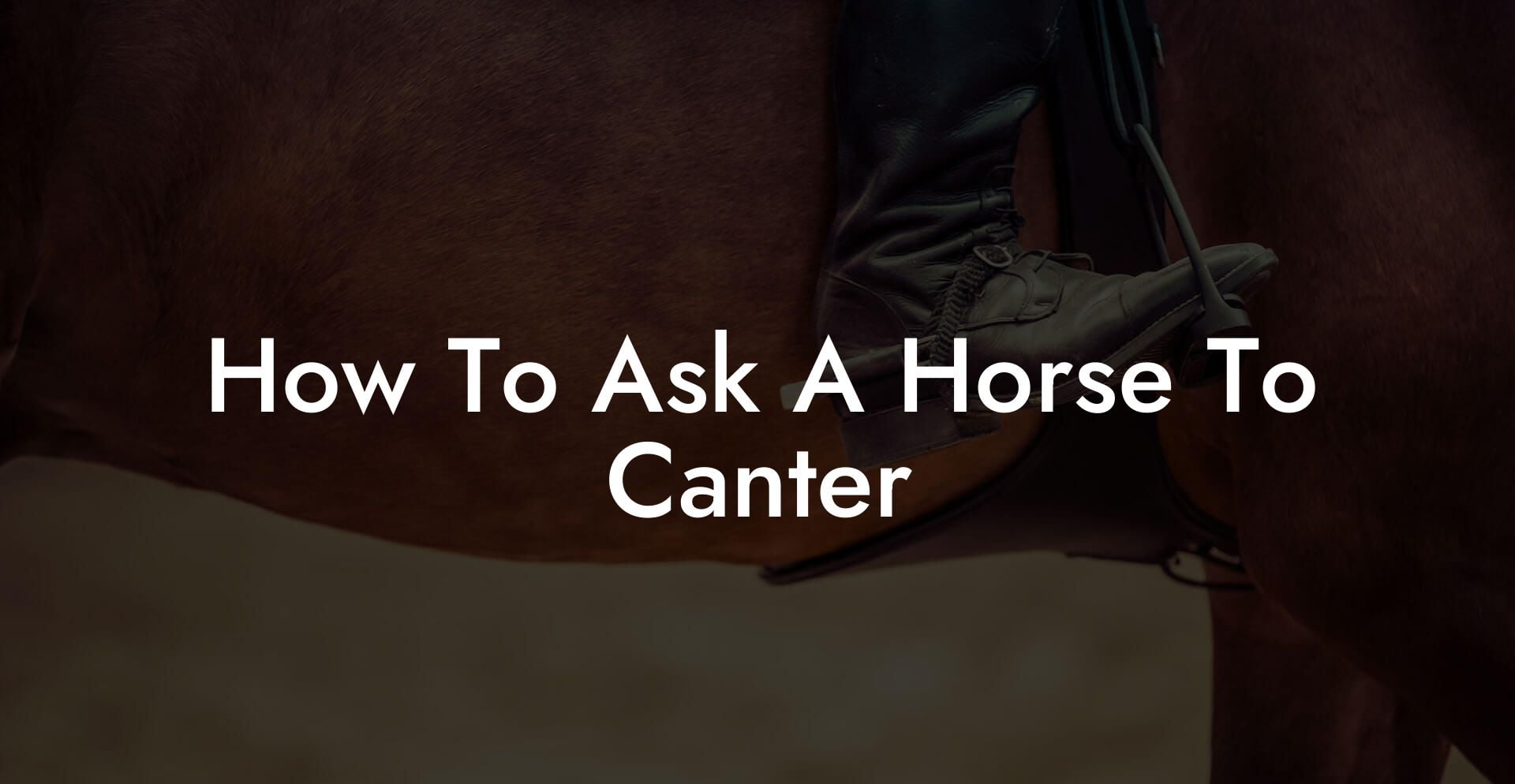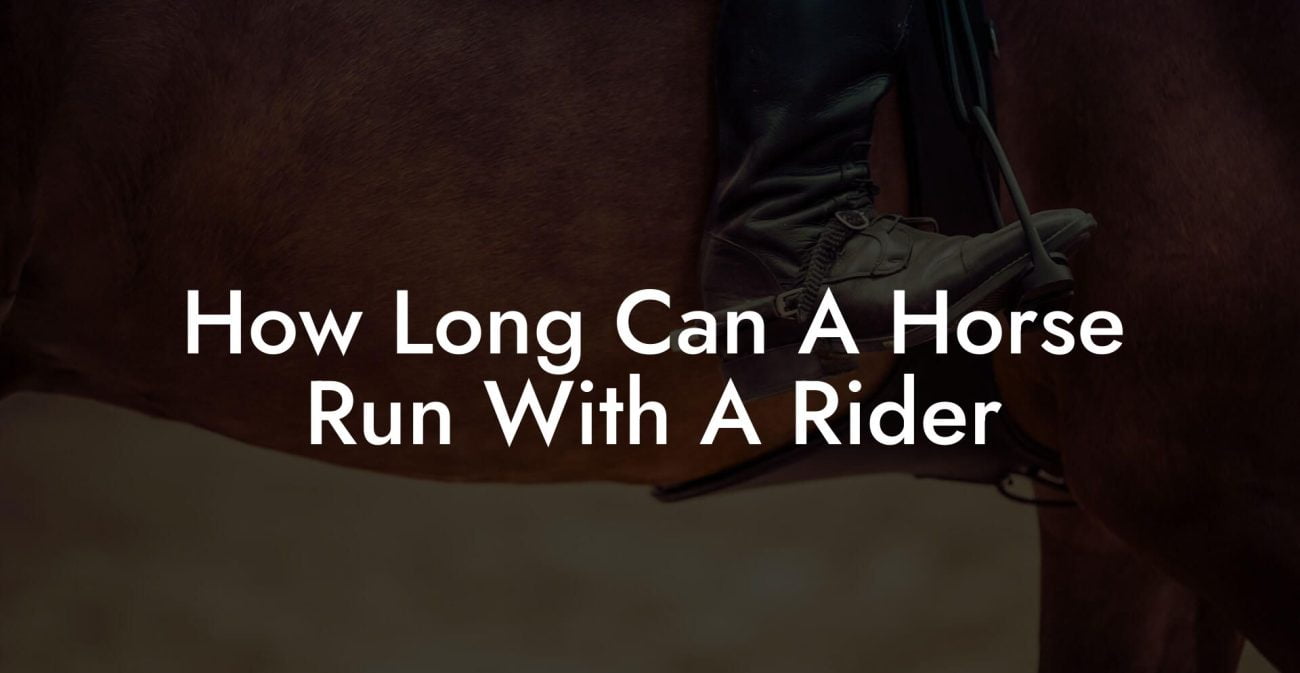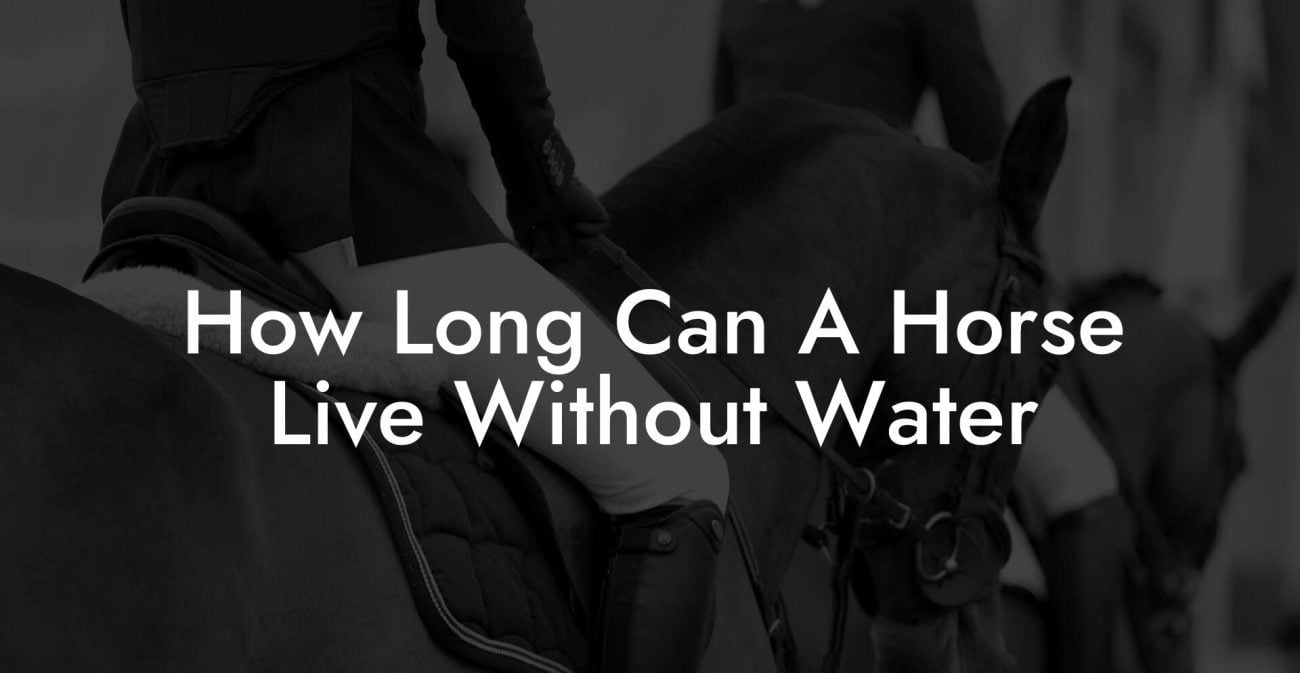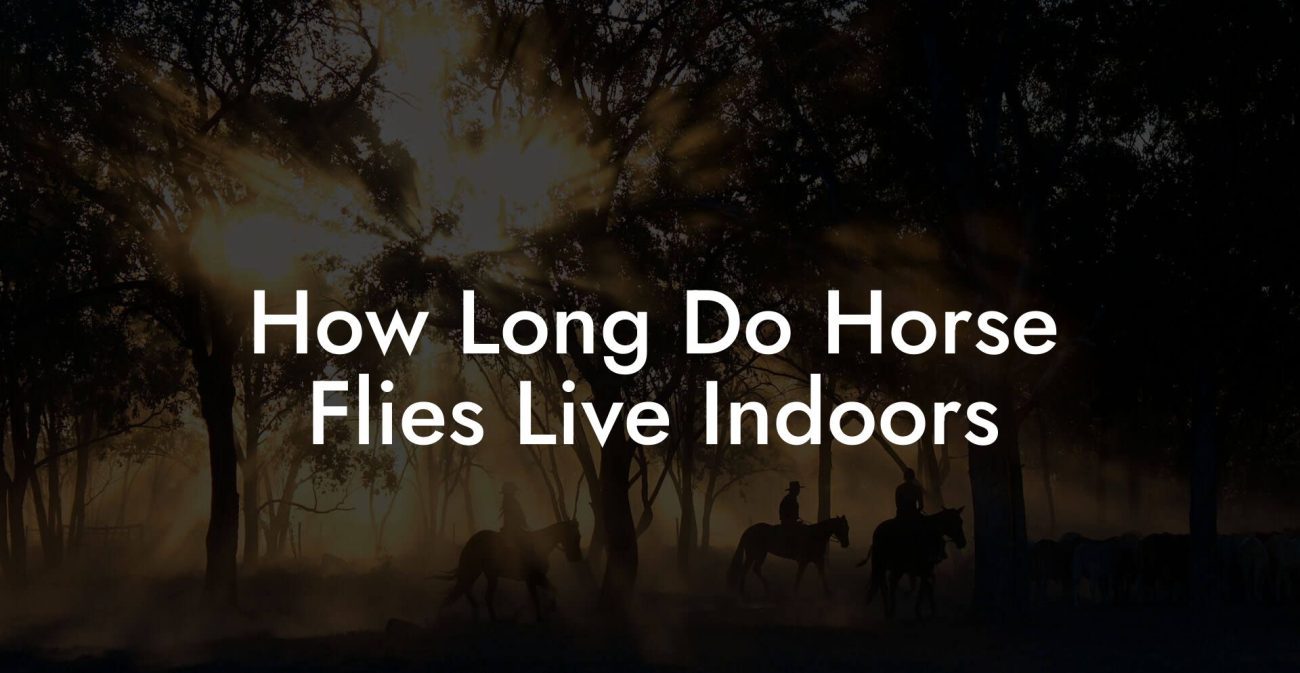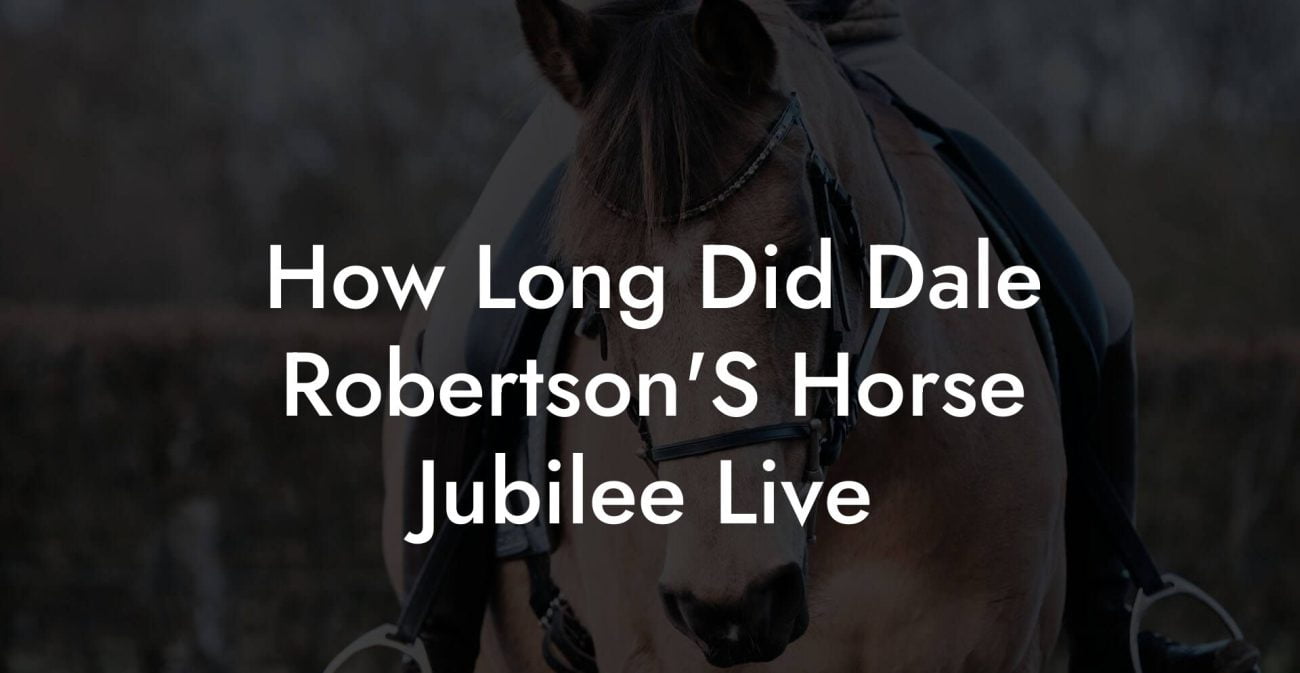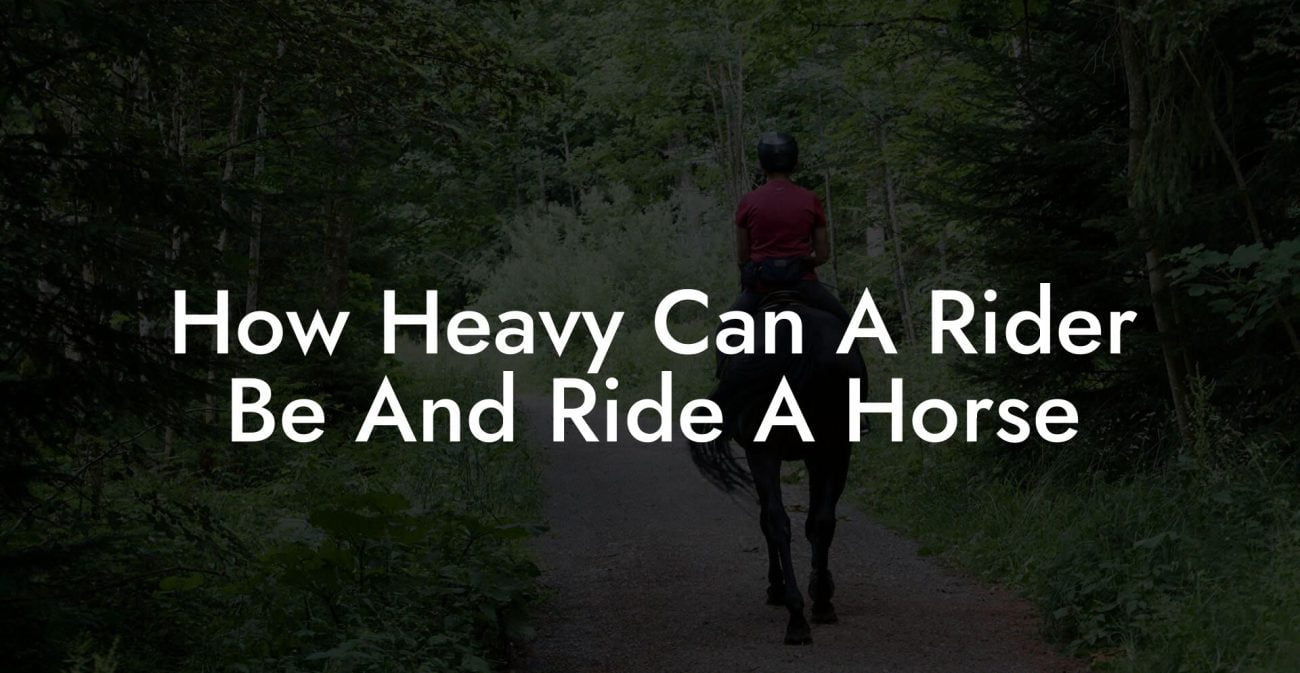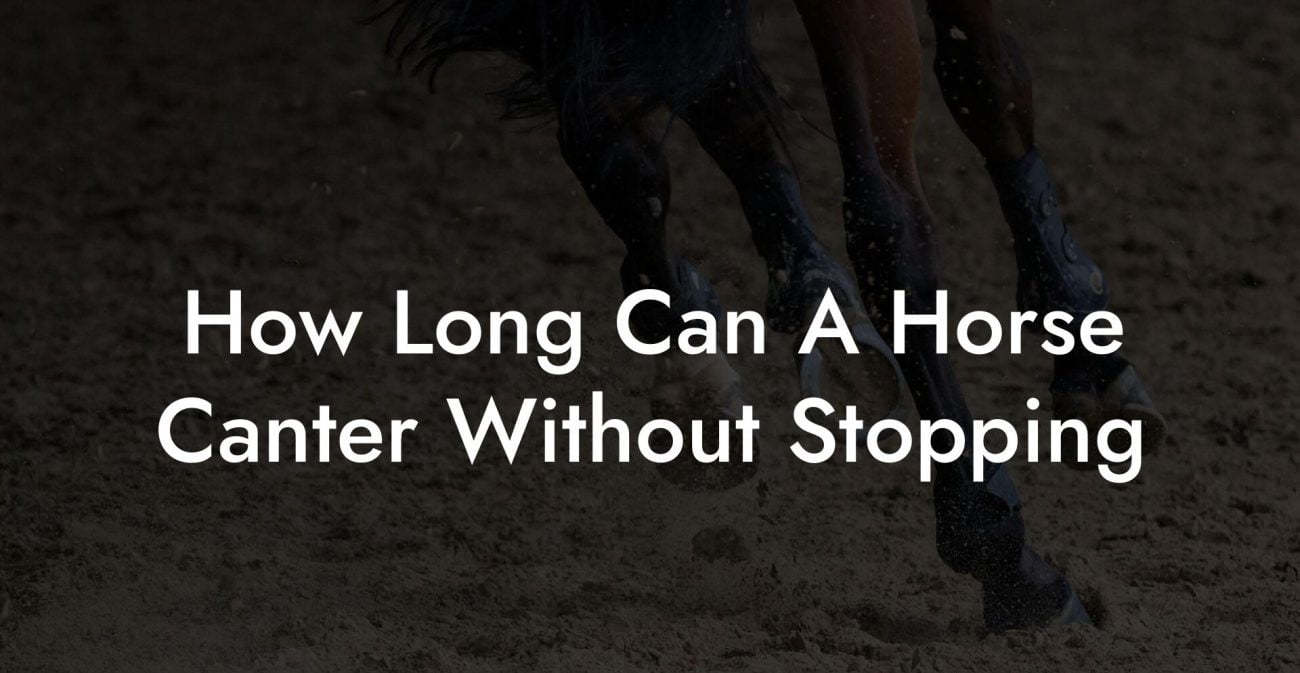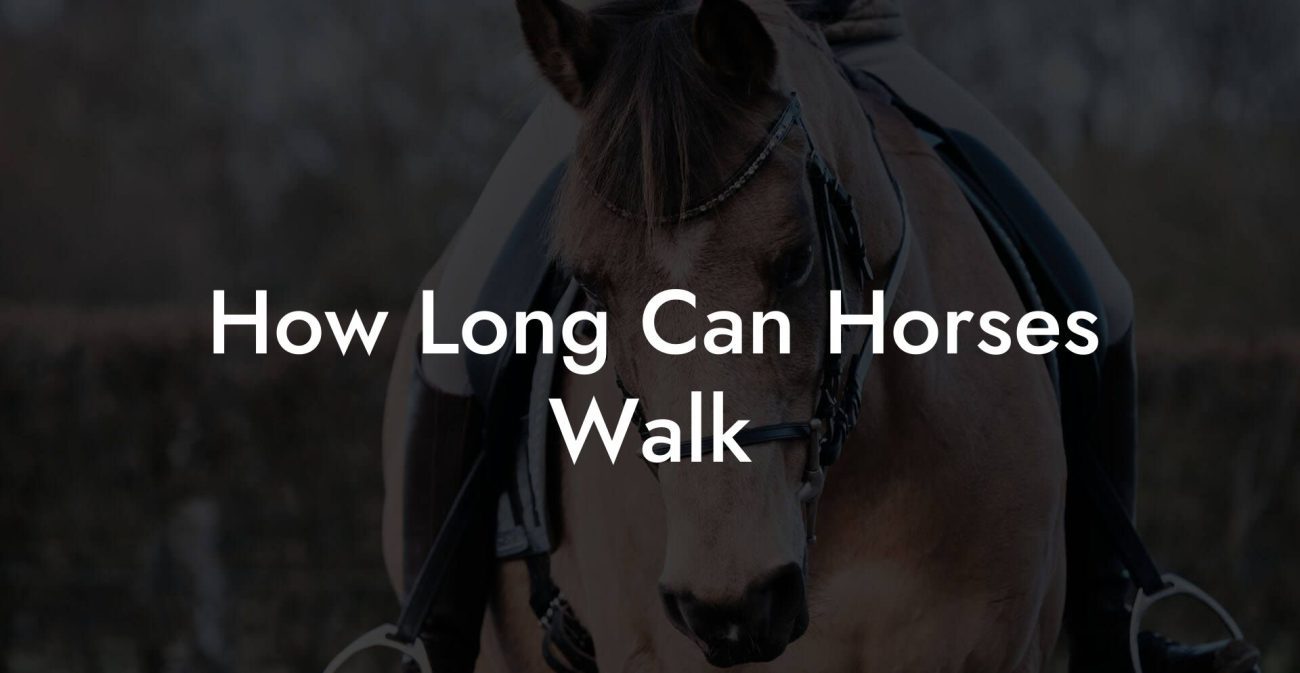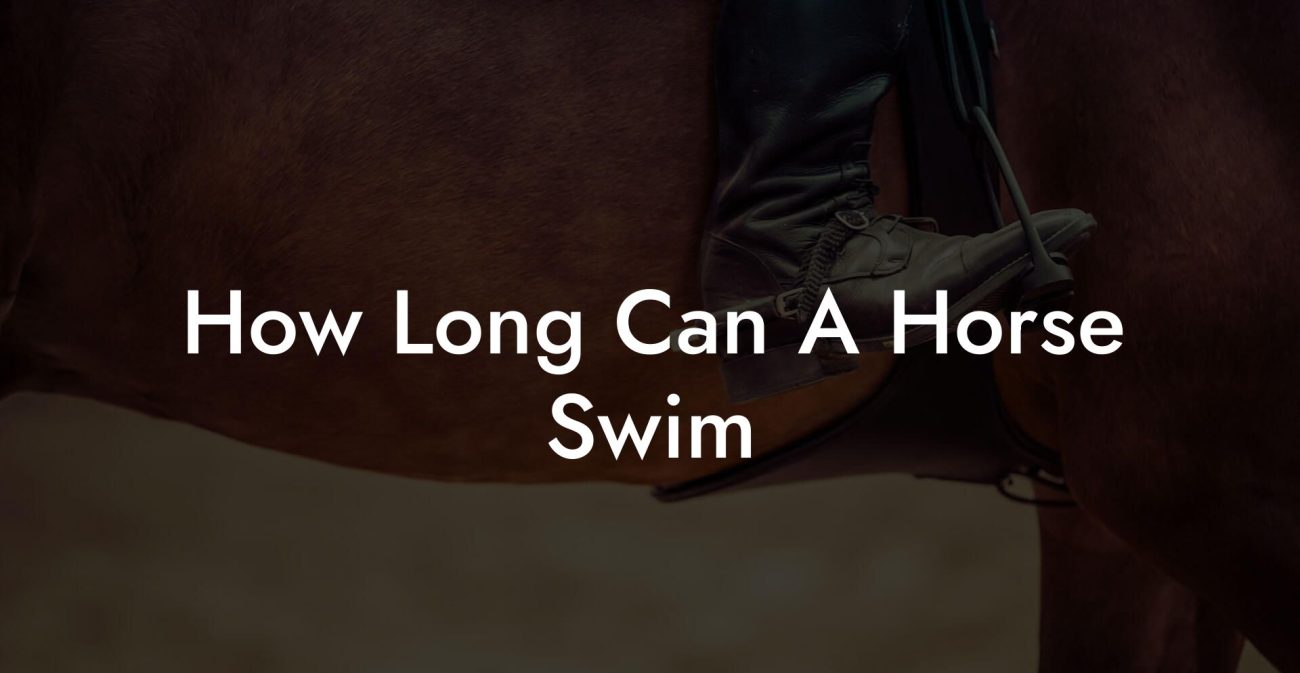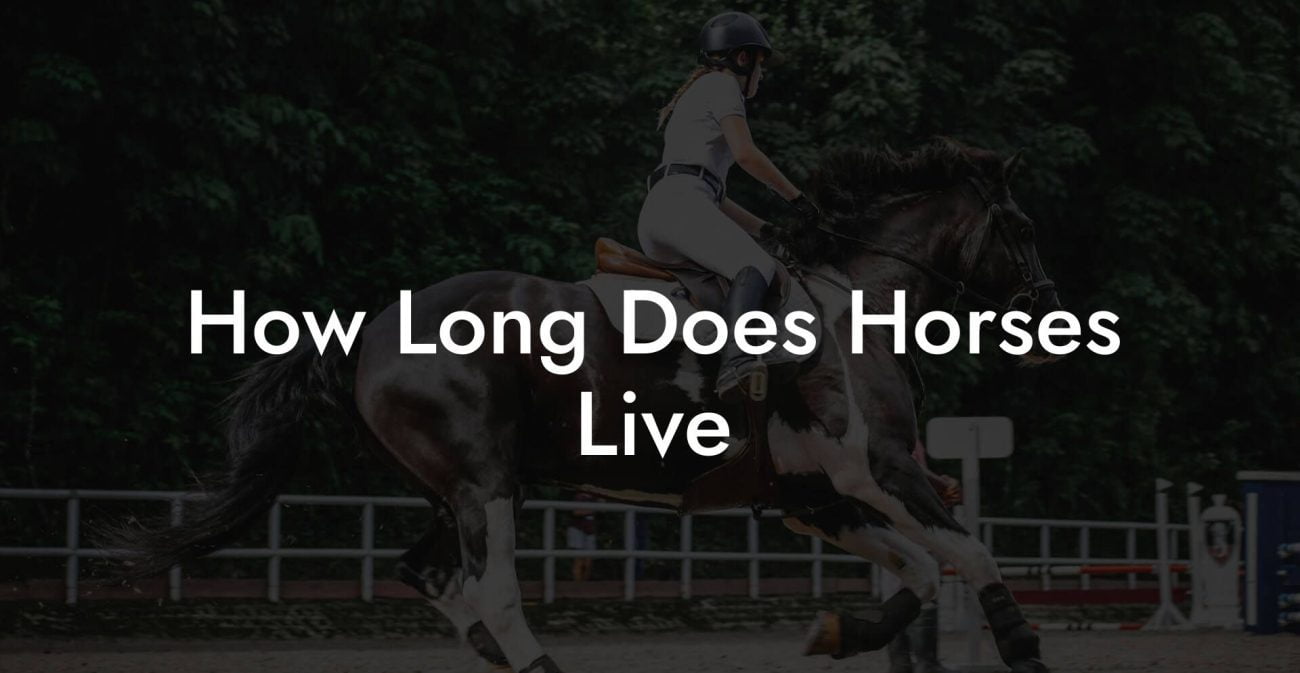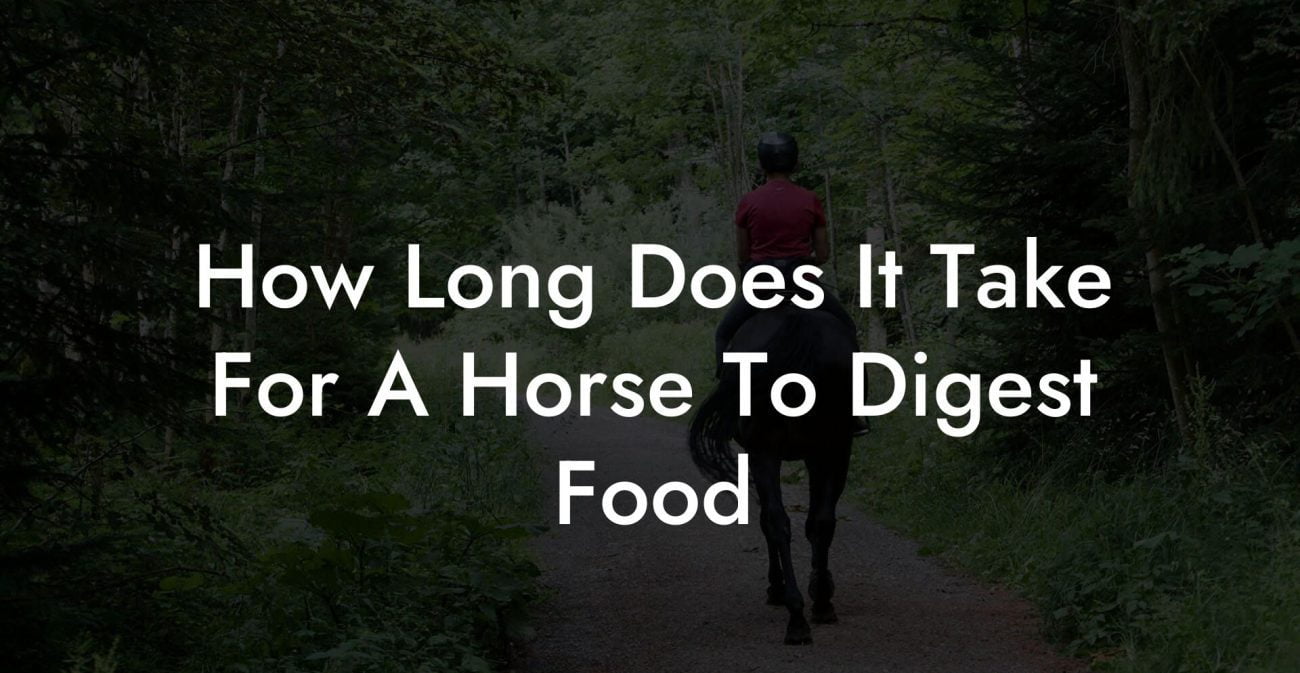Ever wondered how to ignite that spark and cue your majestic horse into a graceful canter? It’s not about barking orders at your equine friend like a drill sergeant; it’s more of an art, a blend of subtle signals, genuine connection, and a dash of humor that makes the process as fun as it is effective. Whether you’re a first-time rider, a Gen-Z enthusiast diving into equestrian care, or a millennial rider seeking a deeper bond with your four-legged partner, this guide will demystify the process of asking your horse to canter, step-by-step.
Quick Links to Useful Sections
- Understanding the Canter: More Than Just a Fancy Gallop
- The Science Behind Horse Behavior and Communication
- Decoding Equine Body Language
- Vocal Commands: Striking a Balance Between Clarity and Kindness
- Building Trust: The Foundation for Any Successful Canter Command
- Positive Reinforcement Techniques
- Step-by-Step Guide: Asking Your Horse to Canter
- Step 1: Establish a Calm Environment
- Step 2: Use Clear and Consistent Body Cues
- Step 3: Provide a Verbal Cue
- Step 4: Monitor and Adjust
- Step 5: Practice Regularly, But Keep It Fun!
- Overcoming Common Challenges in Canter Training
- Challenge 1: Timing Is Everything
- Challenge 2: Miscommunication Through Mixed Signals
- Challenge 3: Overcoming Inhibitions
- Challenge 4: External Distractions
- The Role of Technology and Modern Training Tools
- Wearable Devices and Smart Sensors
- Mobile Apps for Real-Time Feedback
- Mindset and Motivation: The Heartbeat of Successful Riding
- Embrace the Learning Curve
- Stay Present and Informed
- Create a Motivating Environment
- Integrative horse care: Connecting Canter Commands with Overall Equine Well-Being
- Holistic grooming and health Checks
- nutrition and Hydration
- Routine Exercise and Rest
- Resources and Community Support: Your Next Steps
- Real Stories: Experiences From the Arena
- Story 1: The Reluctant Canter Turned Triumph
- Story 2: A Modern Twist on Classic Horsemanship
- Story 3: The Transformation of a Cautious Companion
- Advanced Techniques: Fine-Tuning Your Canter Command
- Integration of Subtle Aids
- Combining Groundwork with Riding Exercises
- Mindful Tactics to Enhance Communication
- The Canter Command Checklist: Your Go-To Reference
- Frequently Asked Questions: Canter Command Edition
- Your Journey Towards a Confident, Cantering Future
Understanding the Canter: More Than Just a Fancy Gallop
At its core, a canter is a smooth, controlled three-beat gait that’s both efficient and stylish. Think of it as your horse’s equivalent of switching from a casual stroll to a confident, rhythmic dance. But here’s the secret: getting your horse to transition from a trot to a canter isn’t about force; it’s about clear communication, respect, and trust.
The canter is a preferred gait for many riders because it offers a balanced mix of speed and control, perfect for jumping, trail rides, or just cruising in style. With a few tweaks to your approach and body language, you can signal your horse to shift gears when the time is right.
In this guide, we’ll explore not only the technical aspects of the canter but also the emotional connection between you and your horse, a connection that’s essential for any successful riding experience.
The Science Behind Horse Behavior and Communication
Horses are incredibly perceptive creatures who communicate predominantly through body language and subtle cues. Unlike humans, their words might be silent, but their signals speak volumes. Understanding these signals is your first step toward asking your horse to canter.
Key Keywords: Horse behavior, equestrian communication, horse signals, non-verbal cues.
Decoding Equine Body Language
A horse’s ears, eyes, and stance are their primary communicators. For example, ears pinned back can mean irritation or discomfort, while ears pricked forward indicate alertness and interest. When your horse is relaxed, their movement is fluid, showing they are comfortable in their environment. Recognizing these signs helps you determine the right moment to ask for a canter.
Through subtle adjustments in your own body language, such as leaning with intention or using gentle pressure from your legs, you can signal to your horse that it’s time to shift gait without resorting to hostile words or harsh physical cues.
Vocal Commands: Striking a Balance Between Clarity and Kindness
While horses might not understand complex sentences, they do respond to tone and inflection. A calm yet assertive tone is the key to indicating that “now is the time to canter.” Command phrases should be brief, think along the lines of “canter on” or “let’s canter”, accompanied by gentle, consistent cues.
The trick here is to avoid sounding like you’re giving orders in a drill sergeant’s voice. Instead, imagine you’re inviting your best friend to join you on a spontaneous adventure, exciting, clear, and filled with the promise of fun.
Building Trust: The Foundation for Any Successful Canter Command
Trust in the equestrian world isn’t built overnight. It’s the product of consistent experiences, mutual respect, and, most importantly, clear communication. Before you can expect your horse to respond to a canter command, you need to develop an understanding that your signals are reliable and positive.
Trust is multi-faceted. It comes from knowing your horse’s personality, some horses are naturally spirited, while others are more laid-back. The context in which you ask for a canter plays a huge role. If your horse associates the command with a time of stress or discomfort, you might get a hesitant response. Instead, pair canter commands with moments of relaxation, reinforcement, and praise.
Positive Reinforcement Techniques
Positive reinforcement is your best friend when it comes to training any horse. Whether it’s a soft pat, a treat, or a soothing word, rewarding your horse when they respond correctly builds a positive association with the canter command. Over time, this reinforcement trains their muscle memory and mental cues, making the transition smoother.
The goal isn’t to have your horse cantering on cue every time but to develop a bond where they understand you’re both in the same realm of fun and safety.
Step-by-Step Guide: Asking Your Horse to Canter
Now that we’ve laid the groundwork, let’s get into the nitty-gritty of how to ask your horse to canter in a way that feels natural, respectful, and even a little bit playful.
Step 1: Establish a Calm Environment
Before initiating any transition, it’s crucial that both you and your horse are in a relaxed state. Find a quiet, familiar area where your horse feels safe. Avoid high-stress situations like busy arenas or unfamiliar trails. This sets the stage for clear communication and reduces anxiety.
Keywords: calm riding environment, equestrian safety.
Step 2: Use Clear and Consistent Body Cues
Your body is the primary tool for communication. Begin by positioning yourself in a balanced seat with relaxed shoulders. As you approach the moment of transition, use a slight forward shift of your weight combined with a gentle squeeze from your legs. This action, paired with a soft verbal cue, lets your horse know that a change in gait is coming.
Think of it as your secret handshake with your equine pal, subtle, yet unmistakably clear.
Step 3: Provide a Verbal Cue
Right when your body cues are in place, use your chosen vocal command. This could be as straightforward as saying “Canter on” or simply “Canter,” depending on what resonates with both you and your horse. Keep the tone upbeat and encouraging. Remember, you’re not barking orders; you’re inviting a partner to engage in a fun, dynamic dance.
Step 4: Monitor and Adjust
Observing your horse’s reaction is crucial. If they shift smoothly into a canter, reward them with a gentle pat or a soothing “good job!” If they seem hesitant, take a step back, relax, and try again once they’ve settled. Training is a process of trial and error, and every moment is a learning opportunity.
Adjusting your cues based on your horse’s feedback not only hones their skills but also strengthens the bond of trust between you.
Step 5: Practice Regularly, But Keep It Fun!
Consistency is key. Include canter transitions as a regular part of your riding routine. However, avoid overwhelming your horse with overtraining. Allow plenty of time for rest, playful interactions, and just enjoying the ride. After all, a happy horse is an eager and responsive horse.
Incorporate games and informal running sessions to keep the atmosphere light, ensuring that every canter is a celebration of your growing partnership.
Overcoming Common Challenges in Canter Training
Let’s be real, training is rarely a perfectly smooth ride. There will be times when your equine friend seems uninterested, distracted, or simply stubborn. Here are some common obstacles and how to navigate them with humor and resilience.
Challenge 1: Timing Is Everything
One of the trickiest parts of asking a horse to canter is getting the timing right. If your cues are too hasty, your horse might balk; if they’re too late, you could miss the window entirely. The solution? Practice makes perfect. Spend time simply observing your horse’s rhythm and learn to sync your cues with their natural movements.
Challenge 2: Miscommunication Through Mixed Signals
Ever felt like your horse was speaking another language? Mixed signals can lead to confusion. Perhaps your body cues contradict your vocal commands, or your tone varies from one ride to the next. To fix this, standardize your approach. Decide on specific cues for every situation and stick with them. Just like your favorite playlist, let consistency be the tempo that keeps your riding sessions smooth.
Challenge 3: Overcoming Inhibitions
Some horses have an inherent hesitance to shift gait quickly, especially if they’ve had negative experiences in the past. This is where patience and gentle encouragement become vital. Gradually build up their confidence with small, incremental steps. Celebrate every success, no matter how minor, and maintain a positive, upbeat attitude throughout.
Keywords: overcoming riding challenges, equestrian training tips, horse confidence.
Challenge 4: External Distractions
A noisy barn, an unexpected movement nearby, or even another horse can throw off your session. When distractions hit, focus on your connection with your horse. Use calming words, refocus your body cues, and if necessary, take a break. Sometimes, stepping away from the chaos is the best way to return with renewed focus and energy.
The Role of Technology and Modern Training Tools
In this digital age, even the world of equestrian care is getting a tech upgrade. From smart wearable devices that track your horse’s movement to mobile apps offering real-time feedback and training tips, technology is making it easier than ever to refine your canter command skills.
Keywords: equestrian tech, horse training apps, digital equestrian tools, canter training technology.
Wearable Devices and Smart Sensors
Imagine a gadget that monitors your horse’s gait, heart rate, and muscle responses as you transition into a canter. Smart wearables are doing just that, they provide data that can help you fine-tune your commands for better results. By analyzing this data, you can adjust your technique to match your horse’s physical responses and improve your overall communication.
Mobile Apps for Real-Time Feedback
Several equestrian-focused apps are now available that offer instant feedback on your riding performance. These apps can track speed, cadence, and even the smoothness of your transitions, giving you actionable insights that help refine your technique over time.
Incorporating these modern tools into your routine not only enhances your technical skills but also deepens the connection, because who wouldn’t want to combine timeless horsemanship with a dash of 21st-century innovation?
Mindset and Motivation: The Heartbeat of Successful Riding
The journey toward mastering the canter is as much about mental preparation as it is about physical cues. A positive mindset, unwavering patience, and a willingness to have a little fun can make all the difference.
When you approach a canter command with genuine excitement and confidence, your energy radiates. Horses are incredibly intuitive and pick up on your emotions. If you’re relaxed and optimistic, your horse will feel secure and ready to match your pace.
Embrace the Learning Curve
Every ride is a chance to learn, mistakes are simply stepping stones on the path to mastery. Don’t get discouraged by setbacks; instead, celebrate small victories. Each time your horse successfully transitions into a canter, acknowledge that progress and use it as fuel to push further.
Stay Present and Informed
Keeping your focus on the present moment not only helps in executing cues with precision but also enhances your awareness of your horse’s subtle responses. This mindfulness practice isn’t just great for riding, it can be a soothing, meditative exercise in itself.
Create a Motivating Environment
Surround yourself with a community that inspires and challenges you. Whether you’re following influential equestrians on social media, joining local riding groups, or simply exchanging tips with fellow enthusiasts, a supportive network can elevate your riding experience to new heights.
Integrative horse care: Connecting Canter Commands with Overall Equine Well-Being
Asking your horse to canter isn’t just a mechanical process, it’s part of a broader picture of holistic horse care. Just as humans benefit from a balanced lifestyle, horses thrive when their physical, mental, and emotional needs are met.
Holistic grooming and health Checks
Keep your horse in peak condition with regular grooming, hoof care, and health checks. A well-groomed horse not only looks the part but feels more comfortable in their own skin, which can lead to a more responsive and energetic canter.
nutrition and Hydration
What your horse consumes has a direct impact on their energy, muscle performance, and overall mood. Be sure to provide a balanced diet filled with high-quality hay, grains, and supplements if necessary. Proper hydration is equally important; a well-hydrated horse is more flexible and better able to perform the quick transitions needed during a canter.
Routine Exercise and Rest
A regular routine that alternates between exercise and rest ensures that your horse’s muscles are conditioned for the rigors of canter training, while ample downtime prevents fatigue and stress. Integrate light exercises and stretch routines into your horse care regimen to promote overall well-being.
Keywords: holistic horse care, equine wellness, horse nutrition, equestrian health.
Resources and Community Support: Your Next Steps
Embarking on your canter command journey doesn’t have to be a solo ride. There are numerous resources, online forums, and local clubs where riders share their experiences, training tips, and inspirational success stories. Whether it’s through YouTube channels dedicated to beginner equestrian skills, online courses in horse care fundamentals, or local riding groups that organize regular clinics, the equestrian community is vibrant and welcoming.
Consider following influential equestrians and trainers on social media platforms like Instagram and TikTok. These influencers combine modern techniques with age-old wisdom, offering bite-sized tutorials, live Q&A sessions, and even behind-the-scenes glimpses at their training routines. Joining online communities like Facebook groups or dedicated forums can provide you with much-needed support, detailed feedback, and even camaraderie with riders who are navigating the same learning curve as you.
As you integrate these resources into your routine, remember that every canter is a milestone, a sign that your hard work, dedication, and genuine care for your horse are paying off. The journey toward mastering your equine partner’s canter is both challenging and rewarding, providing insights not just into horsemanship but also into the art of mindfulness and connection.
Real Stories: Experiences From the Arena
There’s nothing quite like hearing real-life accounts from riders who have navigated the transition from trot to canter. These stories are filled with laughter, learning moments, and plenty of “aha!” moments that can inspire your own training journey.
Story 1: The Reluctant Canter Turned Triumph
Jenna, a first-time rider with a flair for humor, found herself chuckling at her initial attempts when her horse, Apollo, hesitated every time she signaled a canter. Determined not to be defeated, Jenna began to integrate playful cues and rewarded Apollo with extra grooming sessions. Slowly but surely, Apollo began to trust Jenna’s cues, and before long, they were cantering across the pasture with a synchronicity that left onlookers in awe. Today, Jenna credits their successful canter to patience, a few creative reinforcements, and an unyielding belief in their connection.
Story 2: A Modern Twist on Classic Horsemanship
Marcus, a tech-savvy millennial, blended traditional riding techniques with modern tracking tools. Using a wearable sensor attached to his saddle, Marcus tracked every nuance of his horse Bella’s gait. With real-time analytics from his favorite equestrian app, he was able to fine-tune his cues, resulting in smoother transitions and a canter that became the talk of the local riding club. Marcus’s innovative approach shows that respecting the traditions of horsemanship and embracing modern technology can coexist beautifully.
Story 3: The Transformation of a Cautious Companion
Lila’s horse, Duke, was initially notorious for his reluctance to pick up speed. Through consistent practice, gentle encouragement, and by integrating calming techniques like deep breathing exercises for both rider and horse, Lila managed to transform Duke’s approach. Over several months, Duke went from being a stubborn trotter to confidently cantering along the trails. Their story is a testament to how personalized training, empathy, and persistence can break down even the most ingrained hesitations.
Each of these stories illustrates that while the journey to a confident canter might be filled with bumps and detours, the rewards, and the laughs, are well worth it.
Advanced Techniques: Fine-Tuning Your Canter Command
Once you’ve mastered the basics of asking your horse to canter, consider exploring some advanced techniques to refine your command and enhance your overall riding experience. Advanced techniques aren’t just for the pros, they’re for anyone eager to take their ride to the next level.
Integration of Subtle Aids
As you become more in tune with your horse, you can start incorporating subtle aids that go beyond the basics. These include minor shifts in your balance, the precise timing of leg squeezes, and the use of rein cues that work in conjunction with your body language. By integrating these aids harmoniously, you can create a seamless transition that feels almost telepathic.
Combining Groundwork with Riding Exercises
Advanced riders often benefit from combining groundwork exercises with riding sessions. Groundwork, such as leading exercises, circle work, and lateral movements, allows your horse to better understand your cues from a distance. When translated into riding cues, this groundwork creates a robust, responsive understanding that even subtle canter commands are met with enthusiastic cooperation.
Mindful Tactics to Enhance Communication
Meditation isn’t just for humans; engaging your horse in a moment of calm before asking for a canter can work wonders. Spending a few moments in quiet connection, letting your horse feel your calm energy, primes them for the transition. This mindful interaction lays a solid foundation for more advanced exercises and elevates your overall riding practice.
Keywords: advanced equestrian techniques, fine-tuning canter, subtle riding aids.
The Canter Command Checklist: Your Go-To Reference
To help you stay on track and ensure all elements of a successful canter command are in play, here’s a handy checklist:
- Set the Stage: Secure a calm, distraction-free environment.
- Build Trust: Consistently use positive reinforcement and gentle guidance.
- Observe Body Language: Read your horse’s ear position, eye focus, and overall demeanor.
- Use Clear Cues: Combine subtle body cues, leg pressure, and a consistent verbal command.
- Practice Patience: Allow your horse time to process and respond.
- Utilize Feedback: Incorporate modern technology if available to track and adjust your techniques.
- Celebrate Trends: Note improvements and milestones with each session.
Use this checklist as a quick reference before each ride to ensure that your communication is clear and your horse is ready for that beautiful canter.
Frequently Asked Questions: Canter Command Edition
Here are some of the most common questions riders have when learning how to ask a horse to canter:
1. What exactly is a canter and how does it differ from other gaits?
The canter is a controlled, three-beat gait that sits between a trot and a gallop. It’s smoother and more efficient than a trot and allows for greater control compared to a full gallop.
2. Does every horse naturally know how to canter?
While most horses have the physical ability to canter, they need consistent training and clear cues from their rider to do so confidently and safely.
3. How important is my body language when asking for a canter?
Extremely important. Your body language, including your balance, leg pressure, and overall posture, conveys much more to your horse than words alone.
4. Can technology really help improve my canter command?
Absolutely. Wearable devices and equestrian apps provide real-time feedback that can help fine-tune your cues and track your horse’s responses, making your training sessions more efficient.
5. What if my horse is hesitant to canter?
Patience and consistent positive reinforcement are the keys. If your horse hesitates, review your timing and cues, and consider integrating some groundwork to build their confidence.
6. Is it normal for my horse to not always respond perfectly?
Yes, horses are individuals with unique personalities and moods. It’s important to persist, adjust your approach, and remember that every ride is a learning experience.
7. How do I know if my cues are too strong or too weak?
Through careful observation and feedback. If your horse seems stressed or unresponsive, you might be overdoing it. Conversely, if there’s no response, try enhancing your cues slightly until you find a balance.
8. Can I practice cantering cues at home?
Many foundational techniques, including groundwork and body cue exercises, can be safely practiced in a familiar environment under proper supervision.
Your Journey Towards a Confident, Cantering Future
Asking your horse to canter isn’t just about achieving a new gait, it’s an invitation to forge a deeper, more resonant connection with your equine companion. Every shift in weight, each gentle verbal cue, and every shared moment of triumph contributes to a bond that transcends basic training. As you refine your technique, remember that the journey is as important as the destination.
This guide is your starting point, a resource that blends modern equestrian science, age-old horsemanship traditions, and a dash of humor to remind you that riding is as much about joy as it is about precision. Whether it’s through mastering advanced techniques, integrating technology into your training, or simply enjoying the ride, your efforts pave the way for a future where both you and your horse thrive.
So take a deep breath, trust in your bond with your horse, and confidently ask for that canter. Embrace each challenge as a stepping stone, celebrate every graceful transition, and enjoy the ride toward a brighter, more connected equestrian journey.
The arena is waiting, and your partnership is about to evolve into a dance of trust, communication, and spirited canters. Gear up, saddle up, and let the rhythm of the ride guide you into a future where every moment counts.

